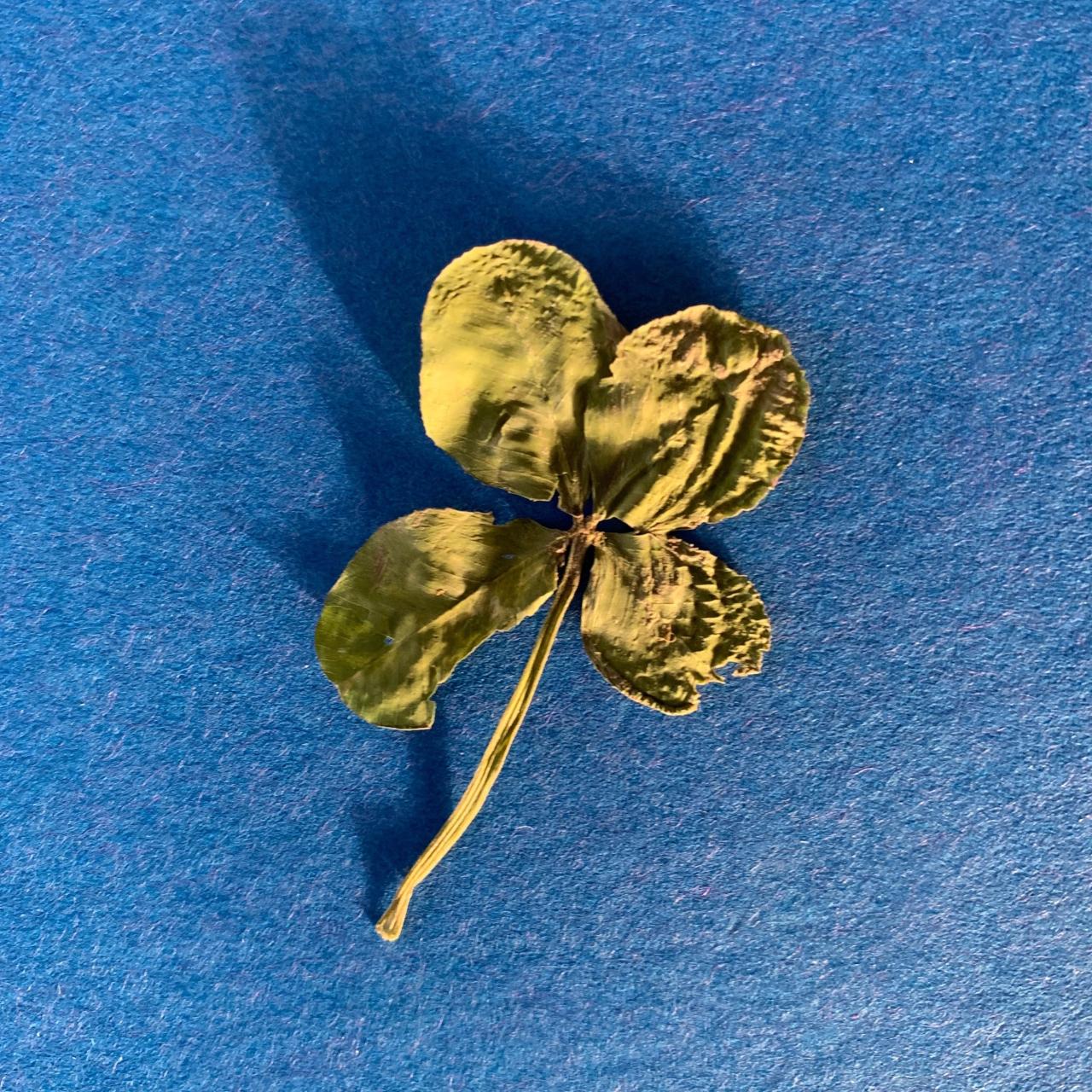How to Find and Grow Your Own Four Leaf Clover for Prosperity: a quest for luck and prosperity, often whispered about in folklore and legend. The elusive four-leaf clover, a symbol of good fortune, has captivated hearts and minds for centuries.
Beyond its mystical allure, the four-leaf clover holds a fascinating scientific story, a rare mutation that sets it apart from its common three-leaf counterpart. This guide will delve into the world of four-leaf clovers, unveiling the secrets to finding and cultivating your own patch of lucky charms.
From understanding the genetic anomaly that creates this lucky charm to uncovering the ideal locations and seasons for your search, we’ll equip you with the knowledge and tools to embark on your own four-leaf clover adventure. Discover the art of cultivating a thriving patch of clovers, maximizing your chances of finding those coveted four-leaf treasures.
We’ll explore the enduring appeal of four-leaf clovers in modern culture, uncovering their role in art, literature, and everyday life.
The Symbolism and Folklore of Four-Leaf Clovers
The four-leaf clover, a rare mutation of the common three-leaf clover, has long been associated with luck, prosperity, and good fortune. Its distinctive appearance and scarcity have fueled centuries of folklore and superstition, making it a beloved symbol across cultures.
Historical and Cultural Significance
The belief that four-leaf clovers bring luck dates back to ancient times. In Celtic mythology, the four leaves were said to represent faith, hope, love, and luck. The Celts believed that the four-leaf clover possessed magical powers and could protect against evil spirits.
While the quest for a four-leaf clover may seem like a whimsical pursuit, it’s a reminder that even the smallest things can bring joy and good luck. If you’re looking to enhance your garden with vibrant blooms and attract pollinators, consider adding Columbine plants, as they offer a striking display of colors and shapes.
For a complete guide on cultivating these stunning flowers, check out Columbine Plants: Your Ultimate Guide to Thriving Gardens. Once your garden is flourishing, you might just find that four-leaf clover seems to pop up more frequently, bringing a little extra magic to your green space.
The association of four-leaf clovers with luck and prosperity is also evident in other cultures. In the Middle Ages, alchemists believed that the clover could be used to create the philosopher’s stone, a mythical substance said to transform base metals into gold.
In Christianity, the four leaves were sometimes interpreted as representing the four Gospels.
Folklore and Legends
Many legends and stories surround the finding of four-leaf clovers. One popular tale claims that Eve took a four-leaf clover from the Garden of Eden, bringing its luck with her to the outside world. Another legend says that fairies hide four-leaf clovers, and anyone who finds one will be granted a wish.
The Connection to Irish Culture
Four-leaf clovers are particularly associated with Irish culture. They are often seen as a symbol of Ireland itself, and are frequently incorporated into Irish crafts and souvenirs. The association with Ireland is believed to have originated from the fact that the country is known for its lush green fields, where clovers grow abundantly.Four-leaf clovers play a prominent role in St.
Patrick’s Day celebrations. They are often worn as pins or incorporated into decorations, and are said to bring good luck to those who find them. The iconic shamrock, a three-leaf clover, is also closely associated with St. Patrick’s Day, and is often mistaken for a four-leaf clover.
Finding a four-leaf clover is a lucky find, but growing your own patch of these lucky charms requires a bit of knowledge about soil and care. Similar to the meticulous care needed for The Top Secrets for Growing Beautiful Rodgers Plants , clovers thrive in moist, well-drained soil and prefer a shady spot.
By understanding the basics of clover care, you can cultivate your own patch of good luck and enjoy the delightful sight of these four-leaf treasures.
Understanding the Biology of Four-Leaf Clovers
The captivating allure of four-leaf clovers stems from their rarity and the symbolic significance attributed to them. But what makes these four-leafed wonders so unique, and why are they so elusive? The answer lies in the intricate world of plant genetics and the subtle interplay of environmental factors.
The Genetic Basis of Four-Leaf Clovers
The development of four leaflets in a clover plant is a result of a genetic mutation. While most clover plants have three leaflets, a specific genetic change can lead to the formation of an extra leaflet. This mutation, known as a “tetrafoliate” mutation, alters the plant’s genetic code, resulting in a different developmental pattern.
Anatomy and Growth Habits
Four-leaf clovers, scientifically classified as Trifolium repens, share the same basic anatomy and growth habits as their three-leaf counterparts. Both types have a taproot system that anchors them in the soil, allowing them to absorb water and nutrients. They also have trifoliate leaves, which are compound leaves composed of three leaflets.
The key difference lies in the presence of the fourth leaflet in four-leaf clovers. While the anatomy of both types is similar, the growth habits of four-leaf clovers can be influenced by the mutation. The extra leaflet may affect the plant’s overall growth and development, possibly resulting in slightly altered growth patterns.
The Rarity of Four-Leaf Clovers
The occurrence of four-leaf clovers is relatively rare, with estimates suggesting that only about 1 in 10,000 clover plantswill have four leaflets. The rarity of this mutation is attributed to several factors:
- The Random Nature of Mutation:The tetrafoliate mutation occurs randomly, and the chances of it happening in a specific clover plant are low.
- Environmental Influences:Environmental factors, such as soil conditions, temperature, and light availability, can influence the expression of the mutation. These factors can either promote or suppress the development of four-leaf clovers.
- Natural Selection:While four-leaf clovers may possess a slight advantage in some situations, they are not necessarily more fit than their three-leaf counterparts. Natural selection favors plants that are best adapted to their environment, and four-leaf clovers may not always have a survival advantage.
Finding Your Own Four-Leaf Clover
The thrill of discovering a four-leaf clover is a cherished experience, a symbol of good luck and a testament to the wonders of nature. While finding one might seem like a matter of chance, there are strategies and techniques that can significantly increase your odds of success.
Identifying Ideal Hunting Grounds
The key to finding four-leaf clovers lies in understanding their preferred habitats. These lucky charms are most commonly found in areas with ample sunlight and fertile soil, where clover plants thrive.
- Lawns:Well-maintained lawns, especially those with a mix of clover and grass, offer a good starting point. Look for areas with a variety of clover types, as this indicates a healthy environment.
- Meadows:Meadows and fields, particularly those with a diverse range of wildflowers and grasses, are excellent hunting grounds. The presence of clover in these areas suggests a natural, undisturbed environment.
- Forests:Forest edges and clearings, where sunlight penetrates the canopy, provide suitable conditions for clover growth. Look for areas with moist soil and a mix of trees and open space.
Optimizing Your Search
Timing is crucial for maximizing your chances of finding a four-leaf clover. The best time to search is during the spring and summer months, when clover plants are actively growing and producing new leaves.
- Spring:As the weather warms and the ground thaws, clover plants begin to sprout and grow, increasing the likelihood of finding four-leaf clovers.
- Summer:During the peak growing season, clover plants produce an abundance of leaves, making it a prime time to search for the elusive four-leaf clover.
Weather Conditions for Success
The weather can significantly impact your clover-hunting success. Ideal conditions include:
- Sunny days:Bright sunlight allows for better visibility, making it easier to spot four-leaf clovers among the foliage.
- Mild temperatures:Moderate temperatures, neither too hot nor too cold, encourage clover growth and reduce the risk of wilting or damage.
- After rain:A gentle rain shower can help to refresh the clover plants, making them more vibrant and easier to see.
Growing Your Own Four-Leaf Clover Patch

Cultivating your own patch of clovers is a fun and rewarding way to increase your chances of finding the elusive four-leaf clover. It allows you to create a dedicated space where you can actively encourage the growth of these lucky charms.
This section will guide you through the steps involved in cultivating your own clover patch, from seed selection to proper care, and offer practical tips to maximize your chances of finding four-leaf clovers.
Seed Selection
Choosing the right clover seeds is crucial for a successful and abundant patch. While any clover species can produce four-leaf mutations, certain varieties are known for their higher frequency of mutations.
- White Clover (Trifolium repens):This is a popular choice for lawns and gardens. It’s known for its fast-growing nature and ability to tolerate a range of growing conditions. It’s also known to produce a higher frequency of four-leaf clovers compared to other varieties.
- Red Clover (Trifolium pratense):This variety is known for its vibrant red flowers and is often used as a cover crop or for its beneficial qualities for soil health. While less common than white clover, red clover also has the potential to produce four-leaf mutations.
- Crimson Clover (Trifolium incarnatum):This clover is a fast-growing annual variety known for its attractive crimson flowers. It’s a good choice for attracting pollinators and improving soil fertility. While not as common as white clover, it can produce four-leaf clovers.
Planting Techniques
The success of your clover patch depends on proper planting techniques. Here’s a step-by-step guide:
- Prepare the Soil:Choose a sunny spot in your garden or a container. Ensure the soil is well-drained and loose. You can amend the soil with compost or other organic matter to improve its fertility and structure.
- Sow the Seeds:Broadcast the clover seeds evenly over the prepared soil. You can also use a seed spreader for more precise distribution. Gently rake the seeds into the soil to ensure good contact.
- Water Thoroughly:Water the seeds after planting, ensuring the soil is consistently moist. Avoid overwatering, as this can lead to root rot.
- Thin Out Seedlings:Once the seedlings emerge, thin them out if necessary, leaving about 6 inches between plants. This will allow for proper air circulation and prevent overcrowding.
Essential Tools and Supplies
Here’s a list of essential tools and supplies needed for successful clover cultivation:
- Clover Seeds:Choose the desired clover variety based on your preference and growing conditions.
- Garden Gloves:Protect your hands while preparing the soil and planting the seeds.
- Hand Trowel:Use this tool to prepare the soil and to thin out seedlings if necessary.
- Watering Can:Provide consistent moisture to the seedlings and established plants.
- Rake:Use a rake to incorporate the seeds into the soil and to level the planting area.
- Seed Spreader (optional):This tool can help distribute the seeds evenly over the planting area.
Proper Care, How to Find and Grow Your Own Four Leaf Clover for Prosperity
To ensure a healthy and thriving clover patch, consistent care is essential.
- Watering:Water the clover patch regularly, especially during dry periods. The soil should be consistently moist, but not waterlogged.
- Fertilizing:Clover plants are nitrogen fixers, meaning they can convert atmospheric nitrogen into a form that plants can use. However, you can supplement their growth by applying a balanced fertilizer once or twice a year.
- Weeding:Regularly remove weeds that compete with the clover plants for nutrients and sunlight.
- Mowing:If your clover patch is in a lawn area, you can mow it regularly to maintain its height and prevent it from becoming too thick.
Maximizing Four-Leaf Clover Chances
Here are some tips to maximize your chances of finding four-leaf clovers in your cultivated patch:
- Plant a Large Patch:The more clover plants you have, the greater the chances of finding a four-leaf clover. A larger patch increases the odds of having more mutations.
- Monitor Regularly:Regularly check your clover patch for four-leaf clovers. Look closely at each plant, especially those with a slightly different shape or growth pattern. You can use a magnifying glass to help you see the details more clearly.
- Keep It Healthy:Ensure your clover patch receives proper care and maintenance. Healthy plants are more likely to produce four-leaf clovers. This includes providing adequate water, sunlight, and nutrients.
- Experiment with Different Varieties:While white clover is known for its higher frequency of four-leaf clovers, experiment with other varieties to see if you can find a different type of four-leaf clover.
The Significance of Four-Leaf Clovers in Modern Culture
The enduring fascination with four-leaf clovers transcends mere botanical curiosity. Their rarity and association with good fortune have cemented their place in modern culture, permeating art, literature, and popular culture. This enduring appeal stems from a deep-seated human desire for luck and prosperity, making the four-leaf clover a potent symbol across diverse contexts.
Four-Leaf Clovers in Art and Literature
The symbolic power of four-leaf clovers has inspired artists and writers throughout history. Their representation in art often evokes themes of luck, hope, and the unexpected. Literature, in particular, has embraced the four-leaf clover as a motif, weaving its symbolism into narratives of adventure, romance, and self-discovery.
- Visual Arts:Four-leaf clovers have been depicted in various art forms, from Renaissance paintings to contemporary sculptures. For instance, the 17th-century Dutch painter, Jan Brueghel the Elder, included a four-leaf clover in his painting “The Garden of Eden,” suggesting its connection to paradise and abundance.
In modern art, artists like Andy Warhol have explored the motif of the four-leaf clover, referencing its cultural significance and consumerist appeal.
- Literature:The four-leaf clover has been a recurring motif in literature, serving as a symbol of luck and good fortune. In J.K. Rowling’s “Harry Potter” series, the character of Neville Longbottom finds a four-leaf clover, signifying a turning point in his journey and a sign of his inherent bravery.
In children’s literature, the four-leaf clover often appears in stories about fairies, elves, and magical creatures, reinforcing its association with enchantment and wonder.
Final Wrap-Up: How To Find And Grow Your Own Four Leaf Clover For Prosperity

The search for the four-leaf clover is a journey of discovery, a blend of folklore, science, and personal connection. Whether you’re seeking good luck, a unique botanical treasure, or simply a captivating adventure, the world of four-leaf clovers offers a rewarding experience.
As you embark on your own quest, remember the symbolism and folklore that have made this humble plant a cherished emblem of hope and prosperity. Let the thrill of the hunt and the joy of discovery guide you as you cultivate your own patch of luck and grow your connection with the natural world.
FAQ Section
Are four-leaf clovers actually rare?
Yes, four-leaf clovers are rare due to a genetic mutation. The odds of finding one are estimated to be around 1 in 10,000.
What are some other lucky charms?
Besides four-leaf clovers, other lucky charms include horseshoes, rabbit’s feet, and lucky pennies.
Can I find four-leaf clovers in different parts of the world?
Yes, four-leaf clovers can be found in various parts of the world where white clover grows, including North America, Europe, and Asia.
Is there a specific time of year to look for four-leaf clovers?
The best time to search for four-leaf clovers is during the spring and summer when the clover plants are actively growing.
